Meredith Knight

Most animals are born to walk. Why are humans so helpless at birth?
Big brains and narrow hips were long blamed for the relative helplessness of human babies at birth. But the energy ...
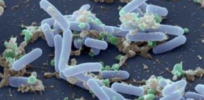
How NASA’s struggle with radiation-resistant microbe could help us understand infections
Bacteria have infiltrated sterile rooms NASA used to build space equipment. Studying what happens to them in outer space could ...
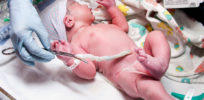
Could blood from babies’ umbilical cords rejuvenate our grandparents’ brains?
Protein in umbilical cord blood rejuvenates cells in the brain’s memory center, improving learning and memory in aging mice. Could ...
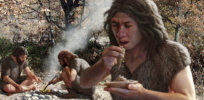
Evolution, the human diet and the meat vs. plant conundrum
Evidence suggests our hominin ancestors turned to meat when climate change reduced resource-rich vegetation. The signatures of these changes may ...

Game of chance: What role does pure ‘bad luck’ play in developing cancer?
Two-thirds of the gene mutations that cause cancer are due to random chance, according to a new study. But environmental ...

Worried about low T? Treatments may be a costly placebo—and could even hurt you
Testosterone therapy does little to counter the effects of aging. But it does have the potential to be harmful for ...

Weak links? How partial DNA matches can muddle criminal investigations
Using DNA collected from a crime scene, police can identify relatives of unidentified suspects through partial, or familial, matches. Legal ...

Fit and fat at the same time? The right genes may make it possible
Scientists are in hot debate over whether it's possible to be obese without creating health risks. Two new studies take ...

Can pig-human chimeras meet our growing demand for transplantable organs?
Experiments show pig-human chimeras might be able to farm human organs for transplantation and disease research. But would it be ...
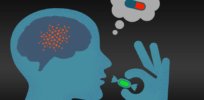
Why you could be genetically programmed to respond to placebos
Confounding drug research, some people appear genetically programmed to believe the placebo they take during drug trials actually works ...

Cancer and genetics: Why smoking threatens more than just your lungs
Cigarettes smoking causes lung, throat and larynx cancers–which makes sense because those tissues come directly into contact with smoke and ...

Sexual reproduction may not be the best evolutionary strategy. So why do we do it?
In many ways asexual reproduction is a better evolutionary strategy: only one parent is needed, and all of their genes ...

The ‘Big O’: How and why evolution brought us the female orgasm
Female orgasms aren’t necessary for reproduction. A comparative evolution study suggests they once might have been ...

Vacation hazard: Your gut bacteria picks up souvenirs, too
When we travel our gut bacteria can pick up antibiotic resistance genes in just two days. What does that mean ...

Genetics of mental health yield surprising connections but no cures
Scientists are slowly uncovering the genes and mechanisms that cause mental health disorders, but we are a long way from ...
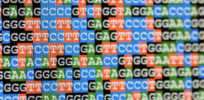
How do you know if your mutation will lead to a genetic disease?
Sonia Vallabh, a scientist, carries a rare mutation that normally causes a neurodegenerative disease. How likely is it she will ...
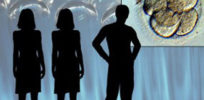
Three-person IVF as an infertility solution has a long way to go
The procedure is typically targeted at parents who want to avoid passing a potentially fatal mitochondrial disease to their child ...
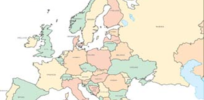
Evolution and war: The ‘deep roots’ theory of human violence
War has long been viewed as a way for societies to acquire wealth and power, even though it often doesn't ...

Mummy DNA: Ancient Egyptians more Middle Eastern than today’s African-mixed population
Scientists have extracted and sequenced DNA from 151 Egyptian mummies with more certainty than ever. They found that ancient Egyptians ...

Settling of the Americas: Searching for pieces of the puzzle
DNA analysis of two ancient infants adds to evidence that humans stayed on the Bering strait for thousands of years ...

Pigs as human organ incubators? Pork producers gear up for potential demand
The pork industry is watching the potentially lucrative market that could be driven by a surge in demand for pigs ...

Early warning child allergy detection system? Competing theories of how to inoculate children against developing reactions
Allergic reactions to foods can strike young children without warning. Now, a controversial blood test may be able to detect ...

How 1100 pound woman’s rare genetic disorder helps unravel mystery of obesity
The root causes of the obesity epidemic remain elusive. Studying rare one-gene cases may provide clues to help scientists understand ...

Boy or girl: Should prenatal testing be censored for fear it may become a sex-selection tool?
Some prominent ethicists push for limiting the release of prenatal testing for fear the information could be used by parents ...
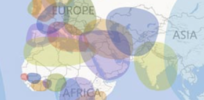
DNA test limits: Current direct-to-consumer tests provide only a glimpse into our ancestry
In a recent story that made headlines, a woman’s DNA test showed she was a descendant of a lost tribe ...

2 young leukemia patients cured with T-cell immunotherapy using genetically engineered donor cells
Gene-edited immune cells cure two British babies with childhood leukemia. But instead of patient-specific cells, doctors used cheaper universal cells ...
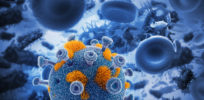
Fighting cancer by shifting the body’s immune system into overdrive
Gene-targeted treatments and immunotherapy offer great promise to cure cancer, but they work in less than half of patients and ...
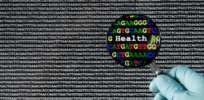
Genetics for public health: A lost cause?
Its power for discovering rare diseases is well proven. But genetics’ impact on public and preventative health has a long ...

